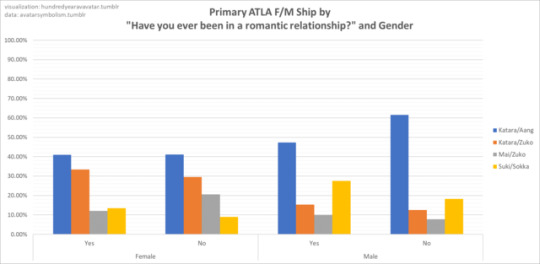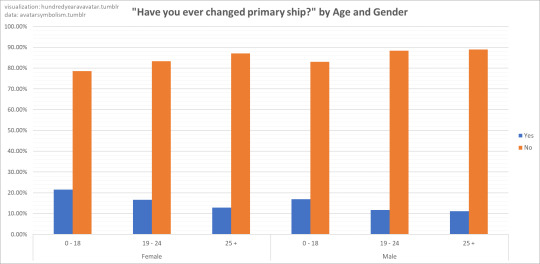#zutara>>>maiko [disrespectfully]
Text
No bc why do Maiko shippers genuinely start tweaking just bc someone prefers Zutara over Maiko based on my experience
#like calm down youre not going to die if someone prefers zutara over that badly written dumpster fire you just so happen to like#zutara>>>maiko [disrespectfully]#im sure there are toxic zutara fans but ngl nowadays the zutara fans i see seem so sweet#way nicer than azula stans at least as much as i love azula#anime#avatar the last airbender#atla#analysis#avatar#zuko#katara#anti maiko#maiko anti#zuko x mai anti#zuko x katara#pro katara#pro zuko
30 notes
·
View notes
Photo


Is Kataang a Nice Guy ship? | Kataang vs Zutara
In a previous post, theadamantdaughter proposed that my understanding of Zutara could be applied to male preference for Kataang in relation to Nice Guys. I encourage you to read the previous post as this post will test and build on a lot of the ideas presented in that thread. In particular, my (perhaps misguided) definition of “self-insert” and then the rebranding as the word “relationality”.
I thought I wasn’t able to test their theory (whether proposed in earnest or not), but it turns out that I have data on romantic relationships. Let’s see if this can reveal anything to us.
Primary ATLA F/M Ship by “Have you ever been in a romantic relationship?” and Gender
Notice that there might be an increase in Kataang preference in males who haven’t had romantic experience. It’s difficult to tell simply by looking if these two proportions are actually different or just the product of natural randomness. Normally, I’d say “we can’t know”, because there’s no pattern to compare it to. But, since the idea of Kataang being linked to Nice Guys was in my head, I noticed that the difference is larger than 10 percentage points. This is relatively large – perhaps large enough to be identified with a statistical test.
Using a contingency table (a type of statistical test), I’ve found that there is a significant difference between the two groups. If you’re familiar with the test, I found chi-square(df = 3, N = 195) = 4.00, p = .046. Good enough for me.
What this means is that we can be 95% confident that males who haven’t been in a romantic relationship actually do prefer Kataang more than males who have been in a romantic relationship. This statistical test makes no claim about why we see this difference, but merely that we are in fact seeing a difference. At this point, these results could be used to support a link between Nice Guys and Kataang. It’s prudent to do a bit more digging, so let’s take a look at another comparison.
Primary ATLA F/M Ship by Primary ATLA F/M Ship by “Have you ever been in a romantic relationship?” and Age and Gender
A key observation in this chart is that the correlation of romantic experience to Kataang isn’t observed in males aged 18 and under.
We might understand this as indicating a relationship to Nice Guys. We can reason that “Nice Guys” (definition which is yet to be clarified) are going to be these males who haven’t been in a romantic relationship after becoming 19. We could then argue that <18 males who haven’t been in a relationship have no reason to adopt a Nice Guy viewpoint, which is why there isn’t a difference in Kataang preference. Hold this thought, as we’ll return to it later.
Speculation about why we see the pattern
So now we have something that needs to be explained: that 19+ males who haven’t been in a romantic relationship tend to prefer Kataang more than those who have been in a relationship. We’ve approached the data with a hypothesis regarding Nice Guys, but it isn’t really a defined model. I think we have a general understanding of what it’s suggesting, but I want to get into the nitty gritty of what’s going on.
The basic idea is that if a male hasn’t been in a romantic relationship, then their views (particularly if they’re older) on romantic relationships are likely to be different to males who have. Of interest to us is the Nice Guy: a male who is frustrated because (as they see it) for some males it’s easy to enter into a relationship, while they themselves as “nice guys” haven’t been able to find a girl. Possible additions to this model of a Nice Guy include the view that females can be shallow, and that males can behave badly or disrespectfully in order to woo a female. While I think we can think that 19+ people (regardless of gender) who haven’t been in a romantic relationship could be frustrated with that situation, it’s not entirely clear to me that these additions of how they might view other people is necessarily a part of the Nice Guy. It’s hard to separate the meme from reality.
In the context of Kataang, Aang could be seen as a nice guy getting the girl in the end. Using my understanding of relationality that I explained in the previous post, these males are personally engaging with the relationship between Katara and Aang. This relationality could take multiple forms, from relating to Aang, to being attracted to Katara, to seeing value in the destined nature of their relationship.
In the previous post, I reasoned that we make our decisions first and then justify them later. We could use the current findings to challenge this theory, as we could argue that not having been in a relationship at 19+ is a draw towards Kataang. We could reason that <18 males don’t exhibit this Nice Guy effect because there is little expectation regarding relationships, so they aren’t Nice Guys.
But this chart suggests otherwise:

["Have you ever changed primary ship?" by "Have you ever been in a romantic relationship" and Age and Gender]
The majority of people don’t change their shipping preference. This supports my theory that we make our decisions early and then justify them later. A choice that a male made up to 9 years ago about a children’s TV show may be linked to whether or not they have been in a romantic relationship by today. That’s freaky. But having or not having been in a relationship isn’t causing people to choose Kataang – they’re just correlated. We want to find the reason that these two are linked.
I’m beginning to suspect that we are actually making a measure of personality. If the likelihood of entering into a romantic relationship is linked to certain personality traits, then perhaps this relationship/no-relationship comparison is actually a personality-type/personality-type comparison. For example, extrovert/introvert in a broad sense.
But, as you may have noticed, this puts us at odds with what we observed when we included Age. <18 males didn’t exhibit any difference. According to the reasoning I just put forward, <18 males should still exhibit these personality traits and so we should see an increased preference for Kataang in those who haven’t been in a relationship. Let’s look at this chart:

70% of <18 males haven’t been in a relationship, so I reason that we’re observing a dilution effect. If we took these <18 males and fast forwarded 9 years, my model predicts that we’d see the relationship/no-relationship pattern present in them too.
This is the model that I put forward. Males who haven’t been in a romantic relationship tend to prefer Kataang because of yet unidentified features of their personality. This type of personality tends to prefer Kataang, and also tends to result in no romantic partners. Personality is higher up in the causal network, and romantic experience and shipping preference are influenced by personality. In terms of the Nice Guy Hypothesis, I think it’s reasonable to suggest that males 19+ who haven’t been in a romantic relationship are more likely to be Nice Guys. So the answer to the question “is Kataang a Nice Guy ship?” is: these two things seem to be linked in some way.
theadamantdaughter’s proposal, if taken seriously and literally, can be understood as the idea that being a Nice Guy increases the likelihood that the male to “self-insert” (in the hard or soft sense of the word). Using the terminology of my previous post, this can be converted into the less dramatic proposition that Nice Guys have increased relationality with Kataang. However, there’s an important distinction between these two things being related, and these two things interacting. If we adopt my personality model, then it’s not immediately clear that the Nice Guy mentality was applied in the original preference for Kataang. If someone becomes a Nice Guy later in life, then how could a Nice Guy-related relationality be relevant to a decision made prior to becoming a Nice Guy? My model seems to suggest that this relationality isn’t important.
There are many other things I haven’t discussed. Alternative models that account for life choices or even single-sex schooling. A model which argues that the original Kataang choice might have been linked to a proto-Nice Guy mentality. Whether or not Zuko is seen as the “bad guy”. The potential support for my personality model through a link between romantic experience and female Maiko shipping. The trend with age and change in shipping preference. The possibility of linking Nice Guy to Kataang through also accounting for when people watched ATLA. These are interesting ideas, but this post is long enough already. All in all, hats off to theadamantdaughter. If it weren’t for their comments, I don’t think I would have noticed this extremely interesting pattern. Online interaction is a funny thing.
#Avatar The Last Airbender#survey#shipping#Kataang#Kataang vs Zutara#Have you ever been in a romantic relationship?#Have you ever changed primary ship?#Age#Gender#Primary ATLA F/M Ship
40 notes
·
View notes